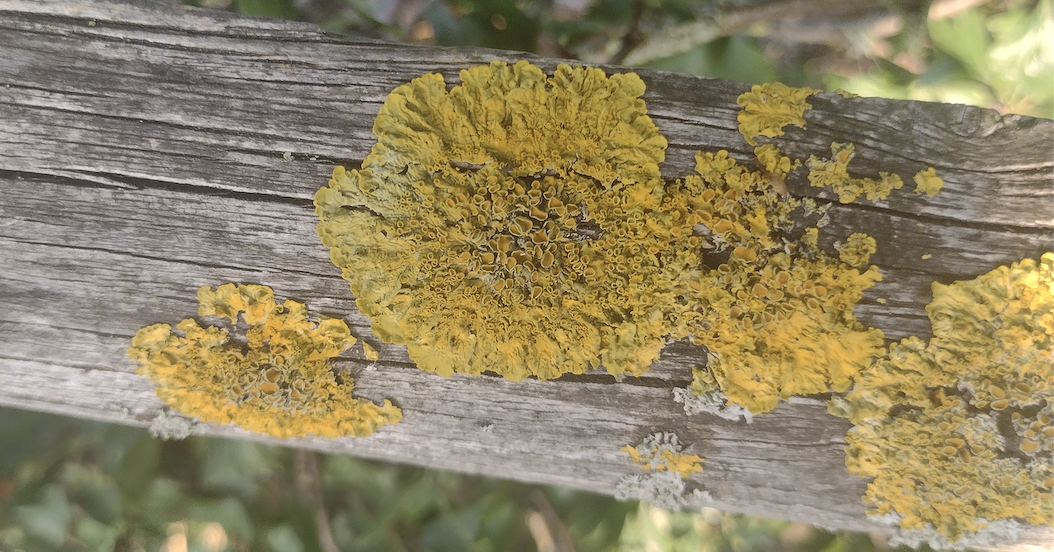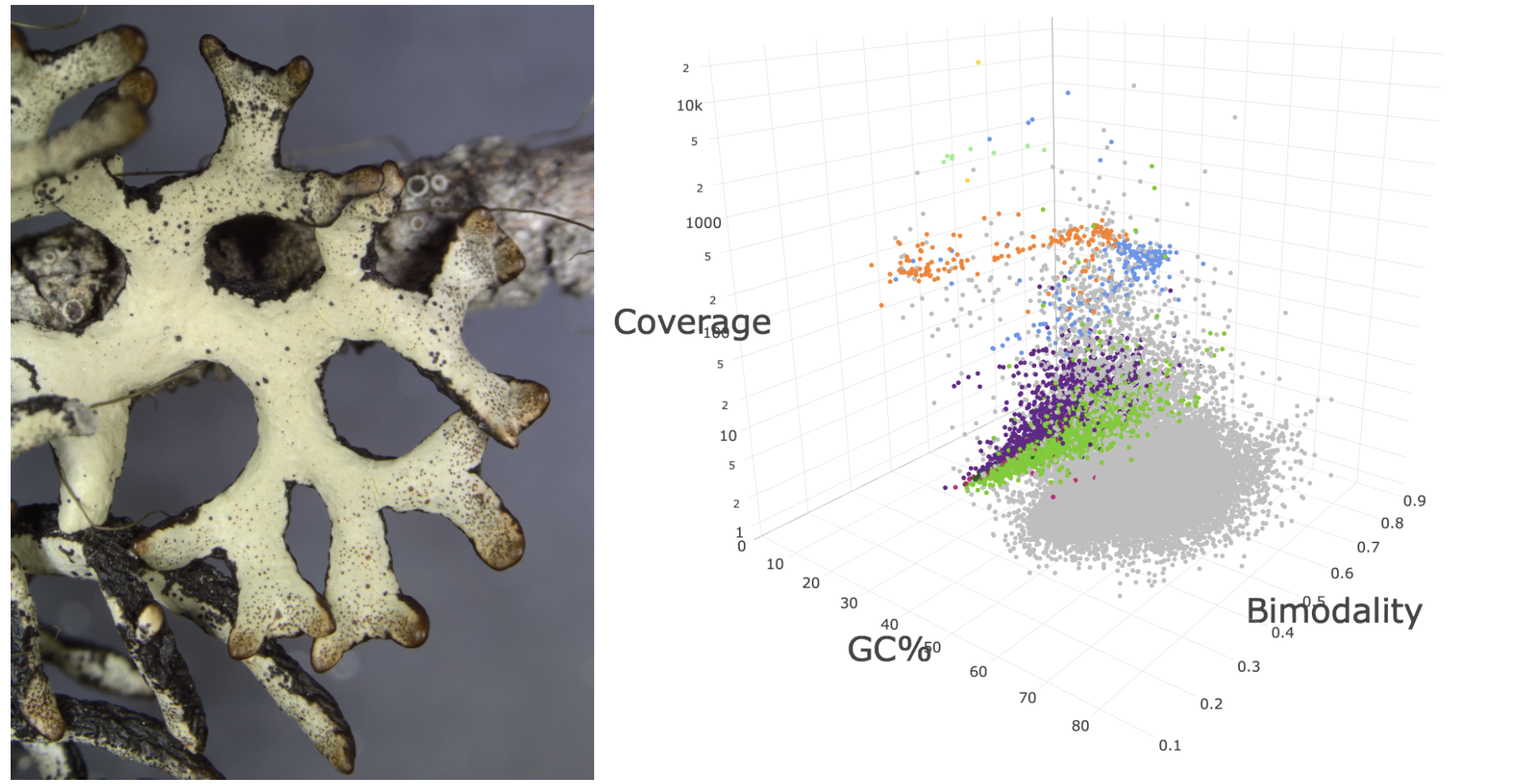Research
Lichens, the archetypal fungal-algal symbiosis, present a major exception to our understanding of how multicellularity works. Lichens are made of multiple unrelated lineages of microbes: different fungi, unicellular algae, and bacteria. Together—and only together—they can form elaborate three-dimensional bodies, which look nothing like individual symbionts.
Meta-omics and protein structure predictions for of symbiotic development in a model lichen symbiosis
Most of my recent work focused on Xanthoria parietina, a common sunburst lichen, which we hope to develop into a model for studying lichen symbiotic development. I used genomics and transcriptomics to profile Xanthoria-associated organisms, both the main fungal and algal symbionts, and other frequently occurring organisms, whose role we only begin to understand. We are now working on identifying molecular mechanisms behind Xanthoria architectures. How is the growth regulated in different symbionts? We hope to answer by looking on gene expression across spatial scale.
Secreted proteins play a crucial role in fungal symbiosis and parasitism. Using AlphaFold-based structural analysis, I profiled the proteins potentially secreted by the Xanthoria fungus, and identified among them putative effectors: proteins used by fungus to manipulate other organisms’ behaviour. Stay tuned for the wet-lab experiments that we are doing to study these potential effectors!
 Xanthoria parietina, enjoying urban environment in Norwich
Xanthoria parietina, enjoying urban environment in Norwich
Using metagenomics to study lichen symbiosis
The goal of my PhD project was to study the give-and-take of different symbionts into the lichen symbiosis. My specific focus was on lesser-studied members of the symbiosis: lichen-associated yeasts and bacteria. To study these evasive organisms, I used metagenomics. By collecting and analyzing metagenomic data (>400 metagenomes, nearly all available at the time), I created an inventory of organisms present in lichens, and produced a thousand of genomes of lichen-associated fungi, alga, and bacteria. Based on the genomes, I generated hypotheses about functional roles of different symbionts. Some of the hypotheses I tested in the lab using a novel digital-droplet PCR protocol.
Lichens and Conservation Biology
Before my PhD, I studied lichens not as symbiotic systems, but as individual members of their ecosystems. My focus was on the overlap of lichenology and conservation biology. What are the ways of protecting rare lichens? How lichens react to human-caused disturbances? How can we use lichens for ecological surveys and ecosystem-level conservation?
My MSc thesis is about a globally rare lichen species, Boreal Felt Lichen (Erioderma pedicellatum). The thesis and a paper based on it, present the first detailed report of the newly discovered Asian population of the species. I describe the ecology and extent of occurrence of the Asian population, and evaluate the threats the species is facing there. My BSc thesis focused on how human-caused disturbances affect lichen communities that grown on aspen bark, and on so-called indicator species: species that can be used to monitor the conditions of the ecosystems.
During my time at the St. Petersburg University, I participated in a number of other projects related to:
- Lichen diversity (publishing additions to lichen floras and collecting information on newly reported species)
- Conservation biology of lichens (surveys of endangered lichen species and lichen diversity in nature reserves).
 A lichen and a lichen metagenome
A lichen and a lichen metagenome
